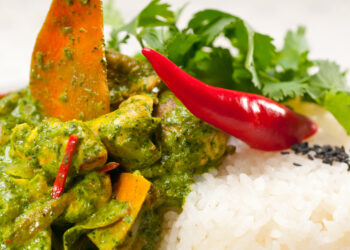History of stews:
Stews have been around for a long time, and ancient Amazonian tribes used turtle shells as pots to cook their own on this side of the pond. So it should come as no surprise that after the invention of pottery 10,000 years ago, cooking became considerably easier and more adaptable.
Stews, while now considered comfort food, were historically a meal of need, and their appeal arose from less-than-comfortable circumstances. Tougher vegetables and less appealing low-cost pieces of meat with lots of chewy gelatinous connective tissue were tenderized by slow cooking.
Jamaican Stew:
Since ancient times, every culture has looked at stews and written their own recipe based on their history and accessible local ingredients. Jamaican cuisine is an odd and wonderful blend of ingredients, much like Peruvian cuisine, with its unique combination of ingredients that reflect the integration of waves of migrant groups.
Jamaican cuisine reflects the fusion of Amerindian (indigenous Americas) with Africans (slaves), Irish, English, French, Portuguese, Chinese (indentured labourer), and Middle Easterners who inhabited the island at some point to create the strange and intriguing mix of ingredients exemplified in this stew: steak, wine, cinnamon, all-spice, thyme, and soy sauce cooked in one pot and served.
Jamaican Beef Stew:
Tender beef and root vegetables are simmered in liquid to make a sauce in every good beef stew, but this recipe takes all of those aspects to new heights.
Every element in this dish is seasoned with Jamaican spices, such as scotch bonnet peppers for heat, allspice (pimento), carrots for sweetness, garlic, ginger, and, of course, thyme to round out the robust flavours.
Ingredients required:
- 1 tbsp olive oil
- 2 1/2 pounds boneless beef stew meat (cut into 1-inch cubes)
- 2 tsp Kosher salt and freshly ground black pepper
- 1 medium white onion (finely chopped)
- 4 medium carrots (peeled and cut into chunks)
- 2 habanero chilies (seeded and minced)
- 2 medium cloves garlic (minced)
- 1/2 tsp allspice
- 4 sprigs of fresh thyme
- 2 whole bay leaves
- 1 can diced tomatoes, preferably fire-roasted
- 1 tablespoon soy sauce
- 1 1/2 tablespoons steak sauce
Procedure:
- Season the stew beef generously with salt and pepper on all sides.
- Over medium heat, heat the oil in an oven-safe Dutch oven pan.
- Cook for 2 to 3 minutes per side, stirring once until the stew meat is thoroughly browned. Make sure the pan isn’t too full. If necessary, cook in batches. Place the steak in the slow cooker.
- Toss in the onions, green onions, garlic, ginger, thyme, allspice, bell pepper, and bay leaf, as well as the scotch bonnet pepper or spicy sauce. Stir for 2-3 minutes, or until the onions are transparent.
- Toss in the tomato paste and bouillon cubes. Stir for another minute, then scrape both sides of the skillet with water or broth. Bring to a boil, then remove from the heat and pour into a slow cooker.
- Then add carrots and potatoes to the slow cooker, along with salt to taste.
- Cook on high for 3-4 hours or low for 6-7 hours, covered.
- Remove from the oven and serve with bread or rice.
Tips & Notes:
- Leave out the white potatoes and replace them with sweet potatoes to make the recipe totally paleo. Alternatively, plantains can be used. Make sure you break them up into large parts so they don’t turn mushy. The carrots and other vegetables are the same way. Plantains that aren’t ripe or green can also be used. Plantains that are ripe do not work well in this recipe.
- There’s no need to splurge on pricey cuts of meat. You can use harder and less expensive cuts like chuck, leg shanks, and bottom round. Collagen breaks down throughout the long cooking process, leaving the flesh fork-tender and permeated with the stew’s aromas. Nothing compares to the flavour of this dish.
- The next day, this stew is even wonderful. Simply allow it to cool before placing it in the refrigerator, covered. When ready to serve, gently reheat the stew on the stovetop, garnish with green onions, and serve with day-of-preparation rice.




















